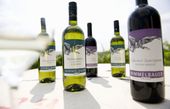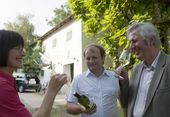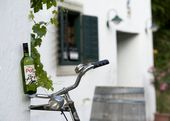Traveling to find wine is always a journey around the world. For those who go to the wine store just to quickly grab whatever they can find on the shelf, it is admittedly a short journey, and a comparatively joyless one. To each his own: There will always be people who happily sit among the potted palm trees at their local swimming pool, and imagine themselves to be on vacation in the South Seas. On the other hand, those who want to experience their wine – that is, really experience their wine – they need to go visit it where it lives: in the Kellergasse. The devil with stately blueprints, and to hell with the dictatorship of right angles and plumb lines! The Weinviertel stretches nobly out in wide, lilting waves from horizon to horizon, between which villages are nested like happy hens, and the white rows of stucco houses, or Presshäuser, are picturesquely sprinkled across the landscape. This gently rolling landscape has been built by wind, which carried in the loss sediments which define the regions soil and character. This fertile ground is wonderful for holding moisture, and that is vitally important, as the Weinviertel is the warmest region in Austria, with the lowest rainfall. Loss soils also make it easy to dig deep, durable wine cellars, for which the region is well-known.
A respectable village in the Weinviertel will have a few hundred Presshaus structures, and roughly the same number of cellars: A dark, enticing world deep in the belly of the earth, bewildering in their diversity, yet united by simple principles: Utility, and enjoyment.





